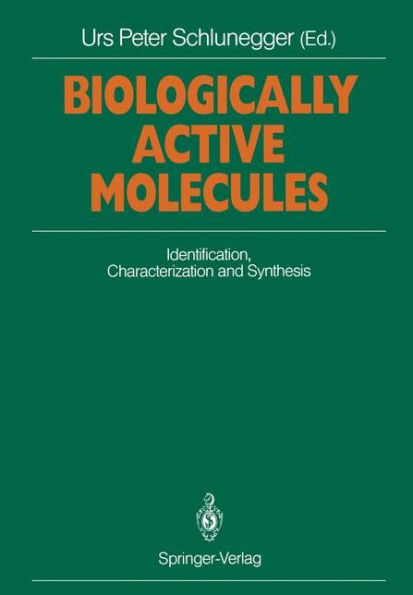Home
Biologically Active Molecules: Identification, Characterization and Synthesis Proceedings of a Seminar on Chemistry of Biologically Active Compounds and Modern Analytical Methods, Interlaken, September 5-7, 1988
Loading Inventory...
Barnes and Noble
Biologically Active Molecules: Identification, Characterization and Synthesis Proceedings of a Seminar on Chemistry of Biologically Active Compounds and Modern Analytical Methods, Interlaken, September 5-7, 1988
Current price: $109.99


Barnes and Noble
Biologically Active Molecules: Identification, Characterization and Synthesis Proceedings of a Seminar on Chemistry of Biologically Active Compounds and Modern Analytical Methods, Interlaken, September 5-7, 1988
Current price: $109.99
Loading Inventory...
Size: OS
*Product Information may vary - to confirm product availability, pricing, and additional information please contact Barnes and Noble
Over the past few years there has been a remarkable and rapid development of modern analytical methods, and the fields of nuclear magnetic resonance and mass spectrometry have been no exception. In addition to being able to do "more and faster", new innovative techniques have also arisen to contribute to a growing understanding of the relationship between chemical structure and biological activity. In order to explore a few of the more interesting points of those developments and applications, a seminar "From Biological Activity to Structure" was organized from September 5-7, 1988, at Interlaken. The four invited speakers, Richard M. Caprioli, Howard R. Morris, Wolfgang Steglich and Dudley H. Williams were kind enough to attend and discuss many facets of their research, especially methodological and technical developments and their applications to specific problems. Participants were introduced to continuous flow FAB (fast atom bombardment) and its use, for example, in the real time monitoring of biochemical reactions in vitro and in vivo; the structural elucidation of secondary metabolites from fungi; the analysis of molecule-receptor interactions; the determination of posttranslational modifications of peptides; and the location of S-S bridges in determining the tertiary structure of proteins.







